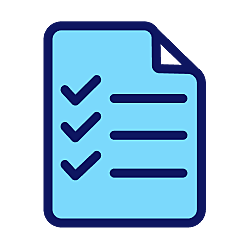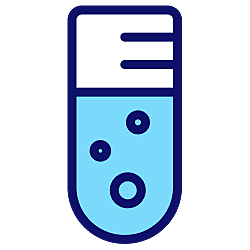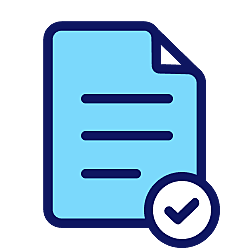Diabetes Test Kit
Get a diabetes test kit online with free and fast delivery.
Prices from £45.00
Get your test kit, take your sample, and send to our UK accredited partner laboratory. Results and advice from our doctors will be ready in 2 to 3 days.
The diabetes home test kit is a convenient way to test yourself for diabetes without having to see a doctor. The simple blood test can help you find out whether you are one of the estimated 850 000 people in the UK who have diabetes but have not been diagnosed.
Follow these steps to request your home test kit and carry out your test.
- Complete our short questionnaire to request your test kit so our doctors can check this is right for you, and choose either home delivery or collection from your local Post Office
- Once your test kit arrives, collect a few drops of blood using a finger-prick test
- Send your samples to our UK-based, accredited partner laboratory (postage is free)
- Once your results are available (in 2 to 3 days), our doctors will review your results
- One of our doctors will contact you, via a secure and confidential message in your patient account, to let you know your results and give you advice and support on what to do next
In some cases, the doctor may need to ask for more information. They may contact you by phone, so make sure your telephone number is up to date in your online account.
Diabetes Test Kit

In stock. Prices from £45.00

No results found.
Please check your spelling or try another treatment name.



About home diabetes testing
-
-
If you think you may be at risk of diabetes, you may wish to take a blood test to check the current status of your health. If you are worried about diabetes or believe you are already suffering from diabetes symptoms, you may also find it helpful to take the blood test.
-
-
If you choose to take a diabetes test with ZAVA, we will send you a test kit for you to use at home. Within 1 to 2 days of requesting your test kit, you will get your easy to use test kit including instructions. You will need to provide a small blood sample. Using the pre-paid envelope included in your test kit pack, you will then post your sample to our partner laboratory. Your results will be available within 2 -3 days of your sample reaching the laboratory and we will let you know as soon as your results are in, which will be made available to you in your account with advice from a doctor.
-
-
Your diabetes test kit contains three lances and a collection tube. Before you take your sample, you should wash your hands with warm soapy water (it is difficult to collect blood if your hands are cold). Dry your hands and use the included alcotip swab to clean the fingertip you would like to use. You should use the third or fourth finger of your non-dominant hand.
Twist and remove the purple stick from one lancet, put it on your fingertip and press the purple button at the end - don’t worry if it doesn’t work straight away, you can use one of the remaining two lances to try again. You should notice a small drop of blood forming on your fingertip, as your skin has been punctured. Use a clean tissue to wipe the first drop away, hold your hand downwards and massage the side of your finger to form another drop of blood. Use your other hand to gently squeeze the finger you are using and catch the drops in the collection tube. You should fill the small tube to the upper line. If you are unable to fill it, please use an additional lancet on another finger to complete the sample.
Once your sample is complete, you can use the supplied plaster to stop the bleeding, put the screw lid on the collection tube, inverting it several times after it’s closed securely. Please make sure you put your details on the sticky label and affix it on the tube - the lab will not be able to analyse your sample otherwise. You then need to put your sample tube inside the protective wallet and put the wallet into the the prepaid envelope, along with your used lancets. You can use any UK post box to send your test kit back to the lab.
-
-
The blood test we use is a HbA1c test. Patients known to be suffering from diabetes are offered at least one HbA1c test per year, as a routine check to determine how well their diabetes is controlled. The test is also recommended for diagnosing diabetes. When your blood sample reaches the laboratory, it will be used to measure your glycated haemoglobin (HbA1c). Your HbA1c level provides valuable information on how high the glucose level in your blood has recently been.
-
-
No. As opposed to the glucose level, the HbA1c level provides information on how high your glucose levels have recently been, by determining your average plasma glucose concentration. This value allows us to draw a conclusion on your health and whether you have diabetes. Testing for glucose would only provide a snapshot of your glucose level at one particular point in time and is therefore less useful for diagnosing diabetes.
-
-
When processing sugar, the glucose in your bloodstream attaches to haemoglobin. Haemoglobin is a protein and part of your red blood cells, which transport oxygen through your body. When clinicians speak of “glycated or glycosylated haemoglobin”, they are referring to haemoglobin which has glucose attached to it.
Analysing HbA1c means that your doctor can find out whether your glucose levels have recently been too high, as red blood cells remain in your body for several weeks. Your HbA1c level thus reflects your blood sugar levels of previous weeks. The higher your glucose levels have been, the higher your HbA1c will be.
-
-
All of our samples are sent to The Doctors Laboratory (TDL), an accredited laboratory providing diagnostic services. TDL are the biggest provider of medical laboratory services worldwide. They will analyse and process your sample within 1 - 2 days of your test kit reaching the lab, so you will receive your results quickly.
-
-
If you are healthy and do not suffer from diabetes, your HbA1c level should lie between 20 - 41mmol/mol.
An increased level indicates a risk of diabetes, or, if the level significantly exceeds 41mmol/mol, impaired glucose regulation or borderline diabetes (42-47mmol/mol).
A level of 48mmol/mol or above is suggestive of diabetes.
People with diabetes usually aim to keep their HbA1c at a target level of 48mmol /mol.
-
-
If your test result indicates that you may have diabetes, our doctor will recommend that you see your GP for further tests. It is possible that you will need to adjust your diet and that you require medical treatment to keep your diabetes under control.
-
-
If you do not currently suffer from diabetes you should still opt for a healthy lifestyle to prevent future illness. Eating a healthy diet, exercising regularly and avoiding weight gain are highly effective in reducing your risk of type 2 diabetes.

Dr Clair Grainger studied at The University of Edinburgh from 2004 to 2009. She's worked in hospitals throughout Edinburgh and London before completing her GP training in North Middlesex Hospital in 2017.
Meet our doctorsLast reviewed: 31 Oct 2019
-
Diabetes, National Health Service [accessed February 2023]
-
Diabetes, WHO [accessed February 2023]
-
Type 2 diabetes, Getting diagnosed, National Health Service [accessed February 2023]
-
What is HBA1C? The British Diabetic Association [accessed February 2023]





